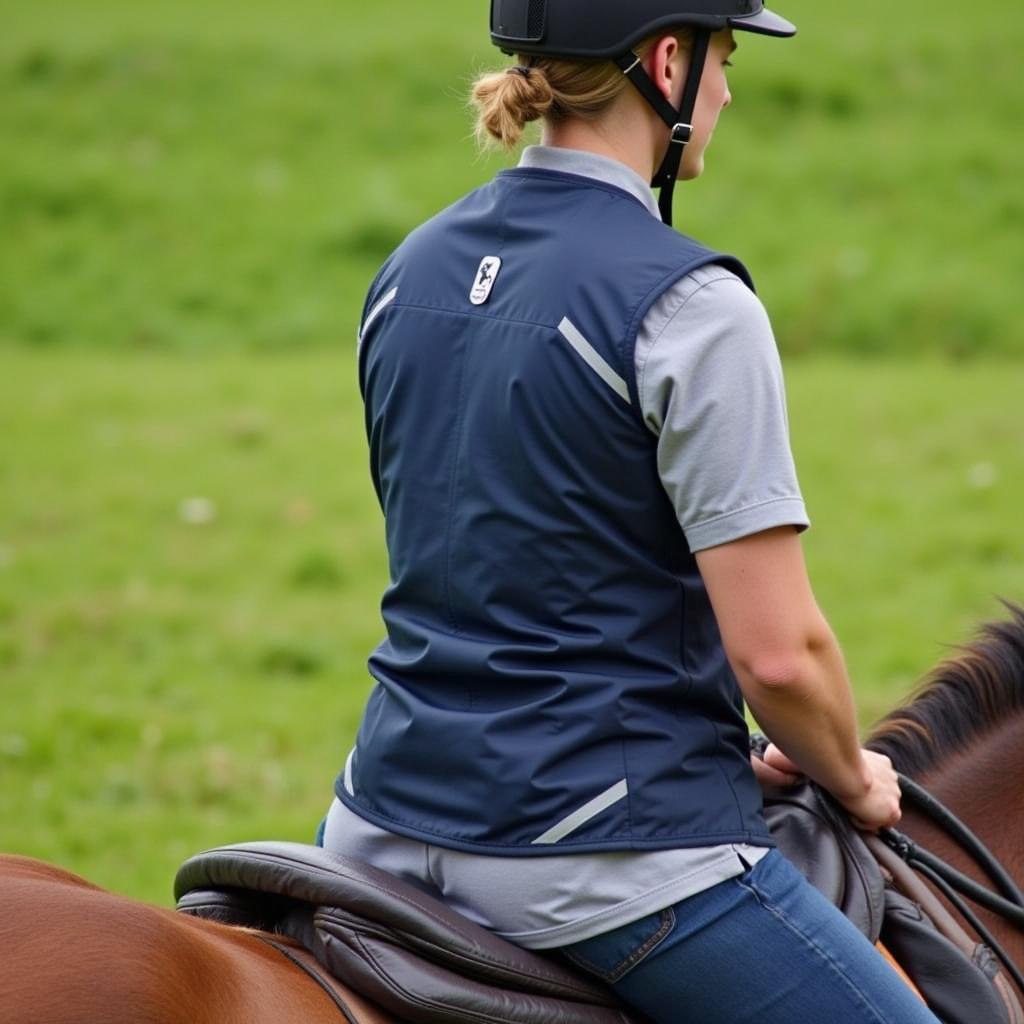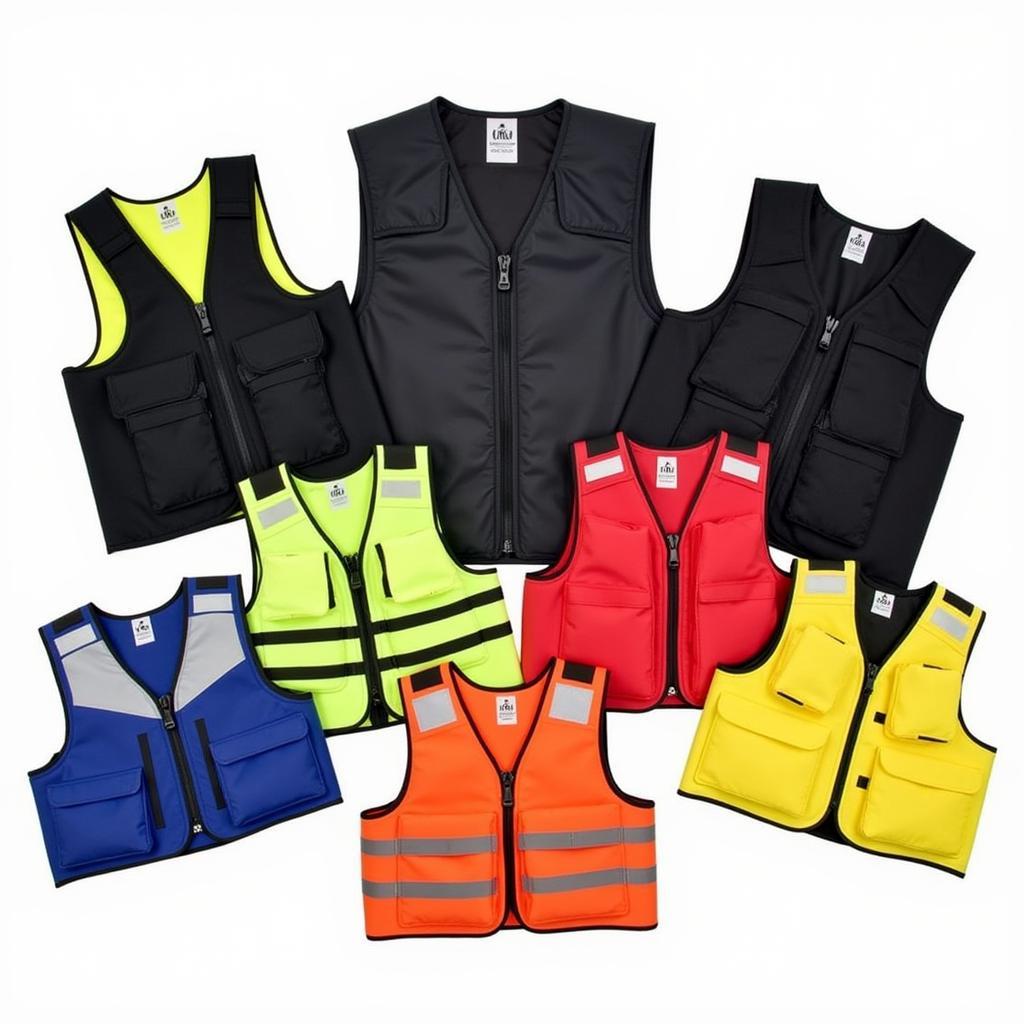A Horse Riding Vest is more than just an accessory; it’s a crucial piece of safety equipment that can protect you from serious injury in the event of a fall. Choosing the right one can be overwhelming with so many options available. This guide will help you navigate the world of horse riding vests, from understanding the different types to finding the perfect fit.  Horse rider wearing a safety vest while riding
Horse rider wearing a safety vest while riding
Types of Horse Riding Vests
There are primarily two main types of horse riding vests: inflatable and standard safety vests. Each type offers unique benefits and is designed for specific riding styles and preferences. Let’s explore the differences:
Inflatable Horse Riding Vests
inflatable horse riding vest These vests are designed to inflate upon impact, providing a cushion of air around the torso. Think of them like an airbag for your upper body. They are lightweight and comfortable to wear, allowing for a greater range of motion. They’re ideal for riders who prioritize comfort and freedom of movement. However, they require regular maintenance to ensure the inflation mechanism is functioning correctly.
Standard Safety Vests
These vests offer consistent protection without the need for inflation. They’re typically made of impact-absorbing materials that distribute the force of a fall. best horse riding safety vest are a durable and reliable choice for everyday riding. While they may be slightly bulkier than inflatable vests, advancements in materials and design have made them increasingly lightweight and comfortable.
What to Consider When Choosing a Horse Riding Vest
Choosing the right horse riding vest depends on several factors. Consider your riding style, the level of protection you need, and your personal preferences.
- Riding Discipline: Are you a casual trail rider or a competitive jumper? Different disciplines may require different levels of protection. For instance, eventing and cross-country riders might benefit from a more robust vest.
- Fit: A properly fitted vest is crucial for both comfort and effectiveness. It should be snug but not restrictive, allowing you to move freely while riding. vest for horse riding should fit snugly without restricting movement.
- Safety Standards: Look for vests that meet recognized safety standards, such as those set by ASTM or BETA. This ensures the vest has been rigorously tested and meets specific safety criteria.
- Comfort: A comfortable vest is more likely to be worn consistently. Consider factors like breathability, weight, and adjustability.
 Rider trying on a horse riding vest
Rider trying on a horse riding vest
How to Properly Fit a Horse Riding Vest
A correctly fitted horse riding safety vest inflatable is essential for optimal protection. It shouldn’t be too loose or too tight. Here’s a quick guide:
- Measure Your Chest: Use a flexible measuring tape to measure around the fullest part of your chest.
- Consult the Size Chart: Each manufacturer provides a size chart. Use your chest measurement to determine the correct size.
- Try It On: Once you have your vest, try it on over your riding attire. It should fit snugly without restricting movement. You should be able to comfortably breathe and move your arms.
Maintaining Your Horse Riding Vest
Proper maintenance is essential to ensure your vest continues to provide optimal protection.
- Regular Inspection: Regularly inspect your vest for any signs of damage, such as tears, rips, or broken buckles.
- Cleaning: Follow the manufacturer’s instructions for cleaning your vest. Most vests can be wiped down with a damp cloth. horse riding cooling vest may have specific cleaning instructions.
- Storage: Store your vest in a cool, dry place away from direct sunlight.
Conclusion
Investing in a horse riding vest is a smart decision for any rider. It provides an added layer of safety and peace of mind, allowing you to focus on enjoying your time with your horse. By considering the factors discussed in this guide, you can choose the horse riding vest that best suits your needs and riding style.  Different types of horse riding vests
Different types of horse riding vests
Expert Quote: “A horse riding vest is an investment in your safety and well-being. Don’t underestimate the importance of proper fit and maintenance,” says Dr. Emily Carter, equine veterinarian and safety advocate.
Another Expert Quote: “Choosing the right vest can significantly reduce the risk of serious injury in a fall. It’s a piece of equipment no rider should go without,” adds John Davis, professional horse riding instructor.
For any assistance, please contact us at Phone: 0772127271, Email: [email protected], or visit us at QGM2+WX2, Vị Trung, Vị Thuỷ, Hậu Giang, Vietnam. We have a 24/7 customer service team.